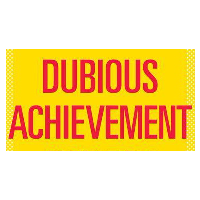California Surges to 46th in K-12 Education Spending Thanks to Even More Miserly States

The numbers are old and the rating system has its critics, but a new report from Education Week gives some perspective to the deep trough California dug over the years for its K-12 education financing.
California leaped from being the nation’s second-worst state for spending to sixth worst one year later in 2010-2011, according to rankings (pdf) compiled by the independent nonprofit publisher of K-12 materials. But that’s pretty thin gruel. California moved up in the rankings even though its adjusted spending per student declined slightly, because the national average declined even more.
The spending numbers, which are based on a 3-year rolling average, are part of a larger report, “Quality Counts,” that includes a review of states’ overall performance built around a report card. California education spending has increased since then.
State voters passed Proposition 30 in 2012, which temporarily directed more money to K-12 and spending per pupil continued to increase as the worst economic downturn since the Depression abated. Governor Jerry Brown has proposed an 8.6% increase in his budget (pdf) for 2014-15.
California fares a little better in the larger scheme of things. The state is the 10th worst when its lousy “School Finance” rating is combined with “Chance for Success” and “K-12 Achievement” categories. That earned it an overall 69.2 rating (out of 100) and the letter grade of “D+,” same as the year before.
The report determines education spending by factoring in regional cost of living differences and taking into account a state’s costlier low-income and special education students. California spent 30% less on students than other states: $8,308 per student, compared to $11,735 nationally. The report uses this and three other spending categories, along with four expenditure equity measures to calculate overall “school finance.” Equity includes disparity in spending across districts.
The state’s 67.0 “D+” rating for “school finance” was nearly matched by its 67.8 “D+” rating for “K-12 achievement.” That rating is determined by combining current academic achievement, change from the past and poverty influences. It was last updated in 2014.
California fared best in “chance for success,” with a 72.8 “C.” The category combines 13 indicators that track learning opportunities for kids (including preschool levels), and the adult outcomes (including income and level of higher education).
Education Week did not grade on a curve. No state earned an “A.” Massachusetts was the highest rated, with 86.2 “B,” followed by fellow “Bs” New Jersey 85.5, Maryland 85.2 and Vermont 83.0. A step behind with “B-s” were New Hampshire 82.4, Connecticut 82.3, Wyoming 80.6, Pennsylvania 80.1, New York 80.0 and Minnesota 79.9.
Mississippi was the worst. Anchored by its “F” in “K-12 achievement,” the state racked up an overall 64.2 “D”, followed by fellow “Ds” Nevada 65.0 and New Mexico 65.5. They were followed by “D+s” Oklahoma 67.6, Arizona 67.6, Idaho 67.7, Alabama 67.7, Louisiana 68.5, South Carolina 68.9 and California.
The only “Fs” handed out besides Mississippi’s went to the District of Columbia for “K-12 achievement” and Idaho for “school finance.”
–Ken Broder
To Learn More:
Report: State No Longer at Bottom in Spending (by John Fensterwald, EdSource)
Report Gives California Poor Grade, Low Ranking for Education (by Deepa Fernandes, KPCC)
Quality Counts (Education Week)
K Thru 12 Education (California Ebudget) (pdf)
U.S. Earns C, and Massachusetts Ranks First in Nation (Education Week) (pdf)
- Top Stories
- Controversies
- Where is the Money Going?
- California and the Nation
- Appointments and Resignations
- Unusual News
- Latest News
- California Forbids U.S. Immigration Agents from Pretending to be Police
- California Lawmakers Urged to Strip “Self-Dealing” Tax Board of Its Duties
- Big Oil’s Grip on California
- Santa Cruz Police See Homeland Security Betrayal in Use of Gang Roundup as Cover for Immigration Raid
- Oil Companies Face Deadline to Stop Polluting California Groundwater




